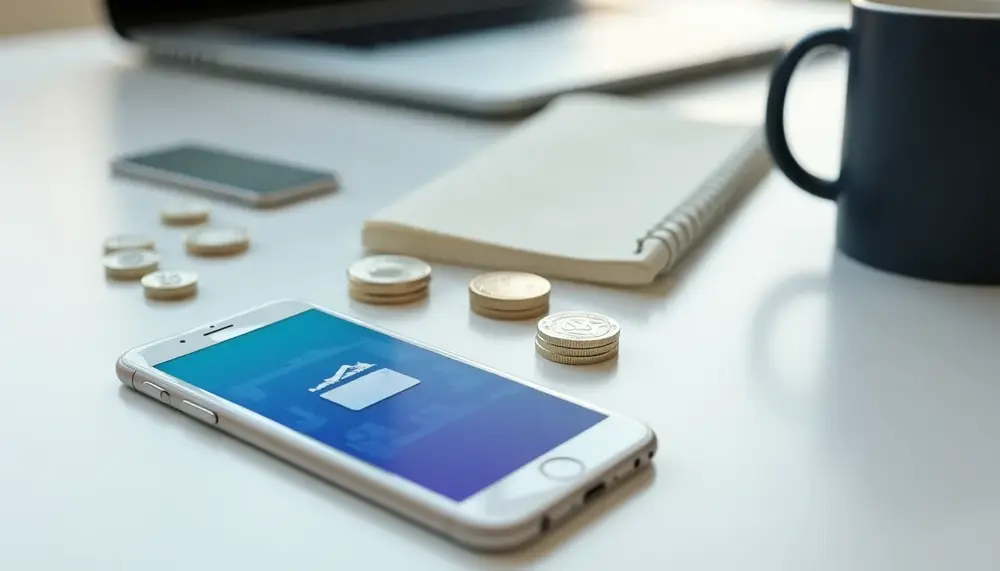Table of Contents:
Definition: What Exactly Is a Crypto Wallet?
A crypto wallet is not a physical wallet, nor is it a place where digital coins are stored in the traditional sense. Instead, it is a specialized software or hardware tool that allows you to access, manage, and interact with your cryptocurrency holdings on the blockchain. What sets a crypto wallet apart from a regular banking app is its unique method of controlling access: through cryptographic keys.
At its core, a crypto wallet is your personal gateway to the decentralized world of digital assets. It doesn’t actually hold coins; rather, it manages the cryptographic keys—most importantly, the private key—that prove your ownership and authorize transactions on the blockchain. Without these keys, you have no control over your crypto, no matter how much you technically “own.”
Unlike traditional financial accounts, there’s no central authority or customer service to reset your access. Your wallet is the sole tool that links you to your assets, and losing access to it means losing access to your funds, permanently. This unique characteristic is what makes crypto wallets both empowering and risky.
Modern crypto wallets come in many forms, from simple mobile apps to advanced hardware devices, but all serve the same fundamental purpose: enabling you to securely interact with the blockchain and manage your digital assets with autonomy and privacy.
How Does a Crypto Wallet Operate?
A crypto wallet operates by generating and managing a pair of cryptographic keys—one public, one private—that interact with the blockchain. This process might sound technical, but it’s actually what gives you control over your digital assets.
When you want to send cryptocurrency, your wallet uses your private key to sign the transaction. This signature proves to the blockchain network that you are the rightful owner and have authorized the transfer. The network then verifies this signature using your public key, ensuring the transaction is legitimate and hasn’t been tampered with.
Receiving funds is a bit simpler. You share your public address (derived from your public key) with the sender. They use this address to direct assets to you, and the blockchain records the transaction. Your wallet then detects this incoming transaction by scanning the blockchain and updates your balance accordingly.
- Transaction Signing: The private key never leaves your wallet; it’s used locally to sign transactions, keeping it safe from exposure.
- Blockchain Interaction: The wallet communicates with the blockchain network to broadcast transactions and check balances, but it does not store coins itself.
- User Interface: Most wallets provide a user-friendly interface to manage keys, view balances, and track transaction history, making complex cryptography accessible to everyday users.
In essence, a crypto wallet acts as your personal command center for blockchain activity, handling the cryptographic heavy lifting while giving you an intuitive way to control your digital wealth.
Understanding Private and Public Keys in Crypto Wallets
Private and public keys are the heart of every crypto wallet, and understanding their relationship is crucial for anyone managing digital assets.
The private key is a randomly generated string of characters that acts as a master password. It is mathematically linked to the public key, but cannot be derived from it. This one-way relationship is what keeps your funds secure. Only the private key can authorize transactions, making it the single point of control for your assets.
The public key, on the other hand, is generated from the private key using complex cryptographic algorithms. It serves as a public-facing address—think of it as your mailbox, where anyone can send you cryptocurrency, but only you can open it with your private key.
- Key Generation: Wallets automatically create these key pairs when you set them up, so you don’t need to be a cryptography expert.
- Immutability: Once generated, your private key cannot be changed or recovered if lost. This is why secure backup is non-negotiable.
- Multiple Addresses: Many wallets allow you to generate multiple public addresses from a single private key, enhancing privacy by separating transactions.
- Hierarchical Deterministic (HD) Wallets: These advanced wallets use a single seed phrase to generate many key pairs, making backup and recovery much simpler.
In summary, the interplay between private and public keys is what enables secure, decentralized ownership and transfer of cryptocurrencies. Mastering this concept is essential for safe and effective wallet use.
Types of Crypto Wallets: Hot Wallets, Cold Wallets, and More
Crypto wallets come in several forms, each with distinct advantages and drawbacks depending on your needs and risk tolerance.
-
Hot Wallets
Hot wallets are always connected to the internet. They include mobile apps, desktop programs, and web-based solutions. Their main draw is convenience—quick access for trading or spending. However, their constant online presence makes them more vulnerable to hacking and malware. -
Cold Wallets
Cold wallets operate offline, storing your keys away from potential online threats. Hardware wallets (like USB devices) and paper wallets (simply a printed key) fall into this category. They’re ideal for long-term storage or holding larger amounts, since offline status shields them from most cyberattacks. -
Custodial Wallets
With custodial wallets, a third party—usually an exchange or service provider—holds your private keys. This setup is user-friendly and often comes with recovery options, but you’re placing trust in the provider’s security and reliability. -
Non-Custodial Wallets
Non-custodial wallets give you sole control over your keys. There’s no intermediary, so you’re responsible for backups and security. This appeals to users who value privacy and autonomy, but it does raise the stakes if you lose your credentials. -
Specialized Wallets
Some wallets are tailored for specific use cases—multi-signature wallets require approval from multiple parties for transactions, while smart contract wallets can interact directly with decentralized applications (dApps) for advanced features.
Choosing the right wallet type depends on how you plan to use your crypto, your technical comfort level, and how much risk you’re willing to take on. There’s no one-size-fits-all answer, but understanding these categories helps you make an informed decision.
Managing Cryptocurrency with a Wallet: Sending, Receiving, and Storing
Managing cryptocurrency with a wallet is all about practical actions: sending, receiving, and storing digital assets efficiently and securely.
When you want to send cryptocurrency, you typically enter the recipient’s wallet address, specify the amount, and confirm the transaction. Many wallets let you scan a QR code to avoid manual entry errors. Before finalizing, you’ll often see a summary, including network fees, so you know exactly what’s happening. Once confirmed, the wallet broadcasts your signed transaction to the blockchain network for processing.
To receive funds, you simply provide your wallet’s public address to the sender. Most wallets generate a unique address for each transaction, boosting privacy and making it easier to track incoming payments. Some wallets notify you in real time when new funds arrive, while others require a manual refresh to update your balance.
For storing cryptocurrency, wallets offer tools to organize and monitor your holdings. You can track balances across multiple coins and tokens, view transaction histories, and sometimes even label addresses for better management. Advanced wallets may support portfolio overviews or integrate with decentralized apps for additional functionality.
- Address book features help you manage frequent contacts, reducing the risk of sending funds to the wrong address.
- Multi-currency support allows you to handle different cryptocurrencies within a single wallet interface.
- Export and backup options ensure you can recover your assets if you change devices or need to restore your wallet.
Ultimately, effective wallet management means staying organized, double-checking transaction details, and using available features to streamline your crypto experience.
Practical Examples: Using a Crypto Wallet with Bitcoin and Ethereum
Let’s get concrete: how does using a crypto wallet actually play out with Bitcoin and Ethereum?
Suppose you want to receive Bitcoin. You open your wallet app, select Bitcoin, and generate a new receiving address. This address—often shown as both a string of letters and numbers and a QR code—can be copied or scanned by the sender. After the sender initiates the transaction, you’ll see the incoming payment in your wallet, typically after a few network confirmations. The process is similar for Ethereum, but with a twist: Ethereum wallets often support not just ETH, but also tokens like USDC or NFTs, all managed under the same address.
- Sending Bitcoin: Enter the recipient’s Bitcoin address, specify the amount, and choose a network fee. Higher fees usually mean faster confirmation. Hit send, and your wallet broadcasts the transaction. You can track its progress with a transaction ID on a block explorer.
- Sending Ethereum: Input the recipient’s Ethereum address, select the asset (ETH or a supported token), and set the gas fee. For tokens, the wallet automatically handles the technical details, so you don’t need to worry about contract addresses. You can also interact with decentralized apps directly from some Ethereum wallets, signing transactions for DeFi or NFT activities.
- Advanced features: Many wallets let you swap assets within the app, connect to hardware wallets for extra security, or use human-readable addresses (like ENS for Ethereum) to simplify transfers.
In short, whether you’re moving Bitcoin or Ethereum, the wallet streamlines the process—no need to understand blockchain mechanics, just follow the prompts and double-check details before you hit send.
Security Measures: How to Keep Your Crypto Wallet Safe
Keeping your crypto wallet safe requires a proactive approach and a bit of vigilance. Digital assets are unforgiving—one slip, and your funds could vanish for good. So, what practical steps can you take to lock things down?
- Enable two-factor authentication (2FA): Always activate 2FA on any wallet or exchange that supports it. Authenticator apps are more secure than SMS codes.
- Regularly update your software: Outdated wallet apps or firmware can have vulnerabilities. Stay current with official updates from trusted sources.
- Use strong, unique passwords: Avoid reusing passwords from other sites. Consider a reputable password manager to generate and store complex credentials.
- Verify addresses before sending: Malware can alter copied addresses. Double-check recipient addresses, especially for large transactions.
- Beware of phishing attempts: Never click suspicious links or download wallet software from unofficial sites. Bookmark official pages and verify URLs.
- Limit exposure on public networks: Avoid accessing your wallet on public Wi-Fi. If you must, use a VPN to encrypt your connection.
- Physically secure your devices: If you use a hardware wallet, store it in a safe place. For mobile or desktop wallets, enable device encryption and lock screens.
- Test backups: After creating a backup or recovery phrase, do a test restore on a separate device. This ensures your backup actually works if disaster strikes.
- Monitor for suspicious activity: Some wallets let you set up alerts for outgoing transactions. Use these features to catch unauthorized activity early.
By combining these measures, you dramatically reduce your risk and put yourself in the best possible position to protect your crypto assets.
Choosing the Right Crypto Wallet for Your Needs
Choosing the right crypto wallet isn’t just about picking the most popular app or device—it’s about matching your wallet to your habits, risk profile, and technical comfort.
- Frequency of Use: If you transact daily or need instant access, a mobile or desktop wallet may suit you. For long-term holding, consider a hardware wallet for added peace of mind.
- Asset Diversity: Not all wallets support every coin or token. Double-check compatibility if you plan to manage a diverse portfolio, especially with newer or less common assets.
- Integration Needs: Some wallets offer direct connections to decentralized apps, exchanges, or NFT marketplaces. If you’re active in DeFi or NFTs, look for wallets with these integrations.
- Backup and Recovery Options: Evaluate how each wallet handles recovery. Seed phrases, cloud backups, or multi-signature features can make a big difference if you ever lose access.
- User Experience: Interface design and customer support matter, especially for beginners. Test demo versions or read independent reviews to gauge usability and reliability.
- Regulatory Considerations: Depending on your country, some wallets may be restricted or require identity verification. Make sure your choice aligns with local laws and your privacy preferences.
Ultimately, the “best” wallet is the one that fits your lifestyle and security expectations—there’s no universal answer, but careful comparison pays off in the long run.
Step-by-Step: Setting Up and Using a Crypto Wallet
Setting up and using a crypto wallet is surprisingly straightforward, even if you’re new to digital assets. Here’s a clear, step-by-step process that takes you from zero to ready-to-transact:
-
1. Choose Your Wallet Type
Decide whether you want a mobile, desktop, hardware, or web-based wallet. Your choice will depend on your usage habits and security needs. -
2. Download or Purchase
For software wallets, download only from official sources or app stores. For hardware wallets, buy directly from the manufacturer to avoid tampered devices. -
3. Install and Launch
Follow the installation instructions. On first launch, you’ll usually be prompted to create a new wallet or restore an existing one. -
4. Create a New Wallet
Select “create new wallet.” The wallet will generate a recovery phrase (sometimes called a seed phrase). Write this down by hand and store it offline—never save it digitally. -
5. Set a Strong PIN or Password
Protect access to your wallet with a PIN, password, or biometric lock, depending on the device. -
6. Verify Your Backup
Most wallets will ask you to confirm your recovery phrase by re-entering it. This ensures you’ve recorded it correctly. -
7. Add Supported Assets
Some wallets require you to manually add the cryptocurrencies you want to manage. Select from the list or enter custom tokens if needed. -
8. Receive Funds
Find your public address for the chosen asset. Share this address or its QR code to receive crypto from others. -
9. Send Funds
Enter the recipient’s address, the amount, and confirm the transaction. Double-check all details before sending. -
10. Monitor and Manage
Use your wallet’s interface to check balances, review transaction history, and explore any extra features like address books or dApp access.
Each wallet may have its own quirks, but this general roadmap will help you avoid common pitfalls and get started with confidence.
Common Risks and How to Avoid Them with Crypto Wallets
Crypto wallets introduce unique risks that can catch even experienced users off guard. Recognizing these pitfalls—and knowing how to sidestep them—can make all the difference between secure asset management and costly mistakes.
-
Social Engineering Attacks
Attackers may impersonate support staff or trusted contacts to trick you into revealing sensitive information. Always verify identities independently and never share recovery phrases or private keys, even if someone seems legitimate. -
Fake Wallet Apps and Extensions
Malicious software often mimics popular wallets to steal your credentials. Only download wallet apps or browser extensions from official sources and double-check developer details before installation. -
Malware and Keyloggers
Some malware targets clipboard data or records keystrokes to intercept wallet addresses or passwords. Use reputable antivirus software and regularly scan your devices, especially before making large transactions. -
Address Poisoning
Scammers may send tiny amounts of crypto from addresses similar to your own, hoping you’ll accidentally copy and use their address for future transactions. Always copy addresses directly from your wallet and never from transaction history alone. -
Man-in-the-Middle Attacks
On compromised networks, attackers can intercept and alter transaction data. Avoid using wallets on unsecured Wi-Fi and consider a VPN for added protection. -
Supply Chain Risks
Hardware wallets purchased from unofficial sources may be tampered with. Always buy directly from the manufacturer and inspect packaging for signs of interference. -
Outdated Backup Practices
If you change wallet settings or add new assets, your old backup may no longer be sufficient. Update your recovery information after any major wallet change.
By staying alert to these less obvious risks and taking simple preventive steps, you can dramatically reduce your exposure and keep your crypto assets safer in the long run.
Summary: Key Takeaways on Crypto Wallets and Their Function
Crypto wallets are more than just tools for storage—they’re the foundation of digital asset sovereignty and self-custody.
- They empower users to participate directly in decentralized finance and digital economies, bypassing traditional intermediaries.
- Modern wallets often integrate with decentralized applications, enabling activities like staking, lending, and NFT management from a single interface.
- Advanced wallet solutions support multi-signature authorization, which can be essential for organizations or shared accounts, adding an extra layer of security and accountability.
- Some wallets offer privacy-enhancing features, such as address rotation or built-in mixers, catering to users who prioritize anonymity in their transactions.
- Continuous innovation in wallet technology—like biometric authentication and hardware integrations—aims to make self-custody both safer and more accessible to mainstream users.
In essence, the evolution of crypto wallets is shaping how individuals and organizations interact with the blockchain, setting new standards for security, privacy, and financial independence.
Experiences and Opinions
Users often face challenges when managing their crypto wallets. The initial setup can be confusing. Many report difficulty in understanding the different types of wallets available. For instance, hardware wallets require careful handling and understanding of private keys. Users must ensure they keep their keys secure. Losing a private key often means losing access to funds permanently.
In practical terms, accessibility can vary. Some users praise mobile wallets for convenience. However, they express concerns about security. Mobile wallets are more susceptible to hacking and phishing attacks. In contrast, others prefer hardware wallets. They appreciate the enhanced security but find them less convenient for daily transactions.
Transactions are another area of concern. Users frequently report delays in processing times. This can be frustrating, especially when trying to take advantage of market opportunities. According to Forbes, transaction confirmation can take longer during peak times.
Customer support also varies widely among wallet providers. Some users share positive experiences with responsive support teams. Others report long wait times and unhelpful responses. This inconsistency can add stress during critical moments.
Another common issue is transaction fees. Users find that fees fluctuate significantly. Some wallets charge higher fees during busy periods. This can lead to unexpected costs when transferring crypto. As noted by Investopedia, understanding these fees is crucial for effective wallet management.
Security remains a top priority. Many users express anxiety about potential hacks. Despite using two-factor authentication, some still feel vulnerable. They emphasize the importance of researching wallet security features before committing. The risk of losing funds due to inadequate security measures is a constant concern.
In terms of usability, interfaces vary. Some wallets offer user-friendly designs. Others have steep learning curves that frustrate new users. For example, wallets with complex settings can deter less tech-savvy individuals. A simple interface can help newcomers navigate the crypto landscape more easily.
Backup options also play a critical role. Users often share experiences about the importance of regular backups. Losing access to a wallet without a backup can be disastrous. Many recommend creating backup strategies as soon as a wallet is set up. This simple step can prevent significant losses.
In summary, experiences with crypto wallets vary widely. Users encounter challenges during setup, transaction processing, and security management. A clear understanding of wallet types and features is essential for successful use. Platforms like NerdWallet provide valuable insights into making informed decisions.
FAQ: Key Questions About Crypto Wallets
What is the primary purpose of a crypto wallet?
A crypto wallet enables users to securely manage, send, and receive cryptocurrencies by controlling access through cryptographic keys. It acts as a gateway to interact with digital assets on the blockchain.
How does a crypto wallet keep my assets safe?
A crypto wallet uses a pair of cryptographic keys—private and public. The private key, which must be kept secret, authorizes transactions and controls the associated assets. As long as your private key remains secure, your assets are protected.
What happens if I lose my private key or recovery phrase?
Losing your private key or recovery phrase means permanent loss of access to your cryptocurrency. There is no central authority to recover your account, so safeguarding backups is essential.
What are the main types of crypto wallets?
Main types include hot wallets (internet-connected for easy access), cold wallets (offline for extra security), custodial wallets (managed by third parties), and non-custodial wallets (user controls keys). Each type varies in convenience and security.
How do I send and receive cryptocurrency using a wallet?
To send crypto, input the recipient's wallet address, specify the amount, and authorize the transaction with your private key. To receive, share your public address. The wallet broadcasts transactions to the blockchain and shows updated balances.











